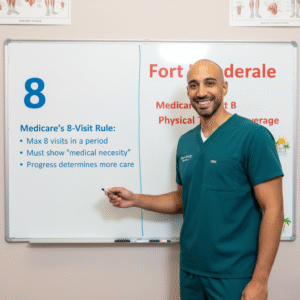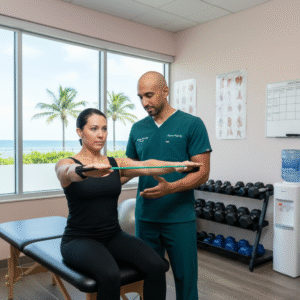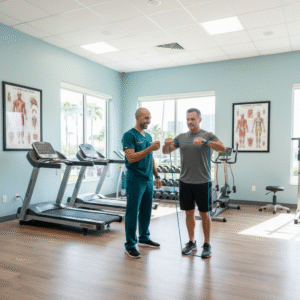Introduction
Ever wondered how effective physical therapy (PT) truly is? It’s often prescribed for injuries, surgeries, chronic pain, and more, but what does “success” look like? This post dives into success rates, condition-specific outcomes, and factors that drive results, helping you make informed choices about your care.

Overall Success Rates: A Solid Track Record
Across various studies, general success rates for physical therapy hover around 68% to 72%, indicating that a majority of patients report meaningful improvement in pain and function following treatment. (yellowbusaba.comKutest Kids)
Beyond percentages, patient experience is overwhelmingly positive:
- 79% report significant pain reduction
- 90% say their quality of life improved
- 88% would recommend physical therapy to others (yellowbusaba.combeaminghealth.com)
Condition-Specific Outcomes
Low Back Pain
Among acute low back pain cases, recovery rates are impressive: 40% to 90% fully recover within six weeks. PT plays a key role in reaching these outcomes and reducing long-term disability (Wikipedia).
Rotator Cuff Injuries
Approximately 75% of patients regain full shoulder mobility and strength within 12 weeks of receiving physical therapy for these injuries (healingwithpt.com).
Post-Surgical Rehabilitation
Physical therapy often helps reduce recovery time by 20% to 30% when compared to patients who don’t receive PT after surgery(beaminghealth.comGitnux).
Stroke Rehabilitation
More than half of stroke survivors who undergo PT regain functional independence, while 15–30% remain permanently disabled, and 20% require ongoing care three months post-stroke (Wikipedia).
Why Physical Therapy Is Often a Better Choice Than Surgery or Medication
- Reduces the need for opioid medications by up to 87% (sprypt.com).
- Cuts healthcare costs by as much as 72% compared to surgery (yellowbusaba.comsprypt.com).
- Reduces risk of hospital readmission by 15–20% (Gitnux).
- Prevents surgery in many musculoskeletal cases, sometimes by 50% or more (ZipdoGitnux).
Key Factors That Influence Success
Early Intervention
Initiating PT soon after injury or surgery leads to faster and better recovery. Early sessions are particularly beneficial in acute cases (PubMed).
Patient Adherence
Consistency in performing prescribed exercises and attending sessions significantly improves outcomes.
Therapist Expertise
Outcomes tend to be better when physical therapists are highly trained and experienced (Flexcare Injury ClinicKutest Kids).
What Patients Share (Mixed but Insightful)
While most experiences are positive, some patients report frustration with conventional PT. One individual shared that their long-term therapy efforts “felt like a waste of time,” with minimal hands-on guidance or results (Reddit).
Others highlight the importance of active participation in therapy, for example, adhering to home exercises, as key to achieving success (Reddit).
Summary Table: Success Rates by Condition
| Condition | Success Rate / Outcomes |
|---|---|
| General PT | ~68–72% report improvement |
| Acute Low Back Pain | 40–90% fully recover within 6 weeks |
| Rotator Cuff | ~75% regain full mobility and strength |
| Post-Surgical Rehab | Recovery time reduced by 20–30% |
| Stroke Rehabilitation | >50% regain functional independence |
Conclusion
Physical therapy delivers positive results for the majority of patients, easing pain, improving function, and enhancing quality of life, without the risks of surgery or opioid use. Success depends on factors like timing, therapist quality, and patient engagement.
Curious about how PT might work for your specific condition? Let me know, I can tailor details for situations like back pain, sports injuries, joint ops, or more. Contact us today!






